Are you planning a trip to Japan and only got 7 days? I got you, bestie! I know how daunting planning a trip can be, so I’ve carefully crafted this 7-day Japan Itinerary to ensure you make the most of your journey. Get ready to immerse yourself in the wonders of Tokyo and Osaka, the historic streets of Kyoto and Nara, and the breathtaking Mt. Fuji. Read on to plan your dream Japan adventure!
Table of Contents
7-day Japan Itinerary: Highlights
Discover the best of Japan with my 7-day itinerary! Start with a food trip in Osaka, savoring delicious local cuisine, and then dive into the excitement at Universal Studios Japan. From Osaka or Kyoto, take a day trip to Nara to explore historic temples and meet the friendly deer. Kyoto, the ancient capital, will captivate you with its rich heritage. In Tokyo, enjoy breathtaking cherry blossom views and take a day trip to Mt. Fuji for stunning scenery. Wrap up your adventure with a magical visit to DisneySea or Disneyland. Trust me, I have done this tour before, so it’s tried and tested!
- Food trip in Osaka
- Universal Studios Japan
- Day trip to Nara from Osaka/Kyoto
- Kyoto, the ancient capital of Japan
- Cherry Blossom viewing in Tokyo
- Mt. Fuji Day Trip from Tokyo
- DisneySea/Disneyland from Tokyo

7-day Japan Itinerary: Osaka, Kyoto and Tokyo
This itinerary is specifically designed for first-time visitors to Japan, who plan to spend 7 days and 6 nights in the country. The trip will begin at Osaka’s Kansai International Airport and end at Tokyo’s Narita International Airport, or vice versa.
Day 1 (Osaka)
Choose a flight that lands in Osaka earlier in the day, giving you the chance to explore the city in the afternoon. This helps you adjust to the time difference and get acquainted with Japan’s transportation system right away.
From Kansai International Airport, take the Haruka Express Train or Nankai Rapi:t Kansai Airport Express to the station closest to your accommodation. For convenience, I suggest staying in areas like Namba (anywhere near Dotonbori is great, IMO). This location offers easy access to a variety of dining options, shopping, transportation hubs, and popular tourist attractions.
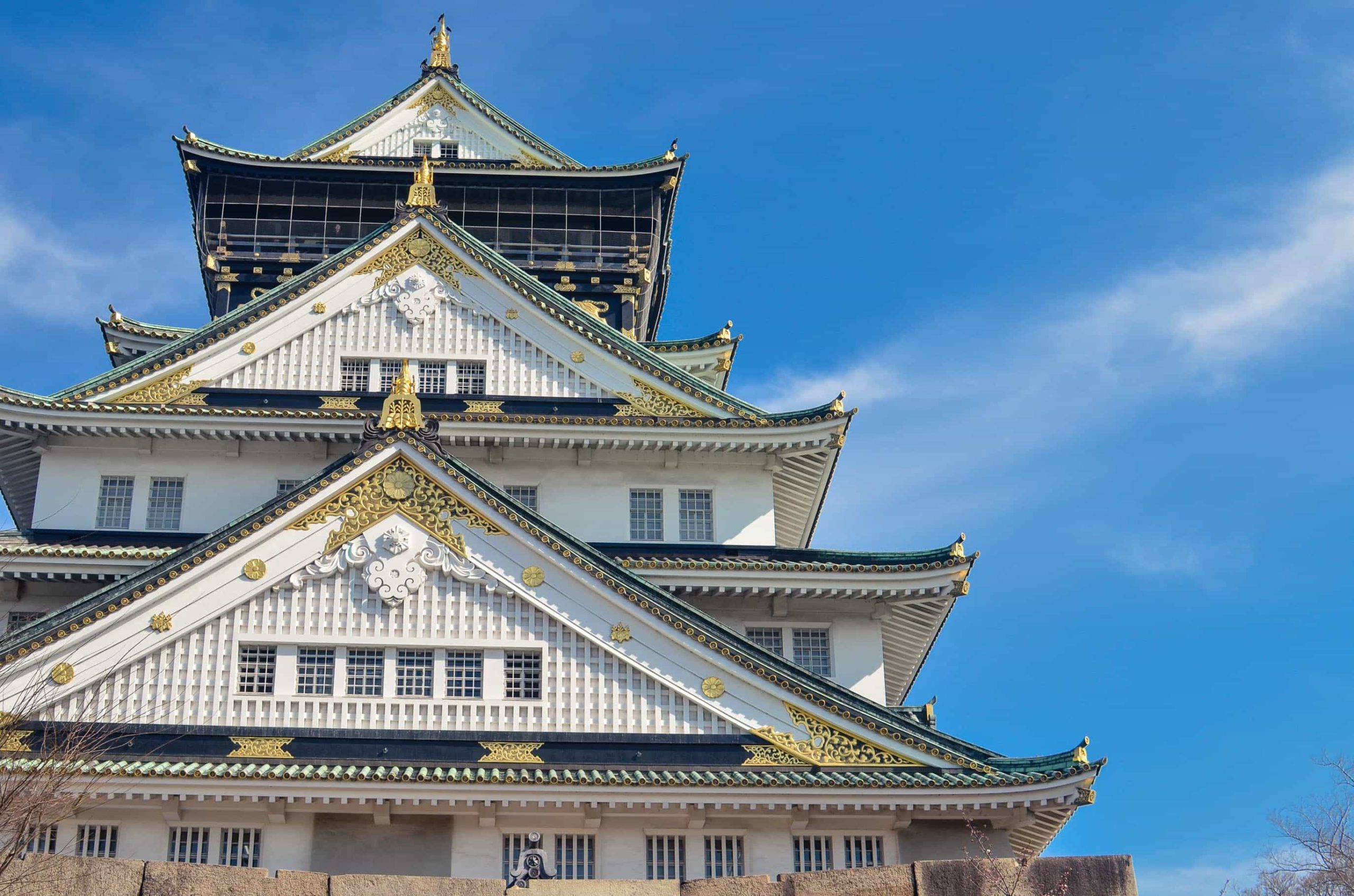
To kick off your Osaka adventure, I suggest starting in the afternoon by visiting Osaka Castle. The castle can be easily accessed from a number of train lines. The nearest JR station is Osakajokoen Station on the JR Loop Line. After exploring the castle, you can visit other attractions in the area, such as the Osaka Aquarium, Tenmangu Shrine, or Umeda Sky Building.
At night, head to the Dotonbori-Shinsaibashi area to experience Osaka’s unique food culture. Take the Midosuji Subway line and get off at either Namba Station (subway) or Shinsaibashi Station. Spend the rest of the evening exploring the area and trying some of the local delicacies.
Day 2 (Osaka or Nara)
Universal Studios Japan
If you are a theme park fan, then you can spend an entire day in Universal Studios Japan. To get to USJ, take the JR Yumesaki (aka Sakurajima) line from Osaka Station or Nishikujo Station to Universal City Station. To get the most out of your visit, get an Express Pass. Combined with a USJ park entry, this Express Pass grants you priority access to rides and attractions.You can either get the Universal Studios Japan Express Pass 4 or Universal Studios Japan Express Pass 7.

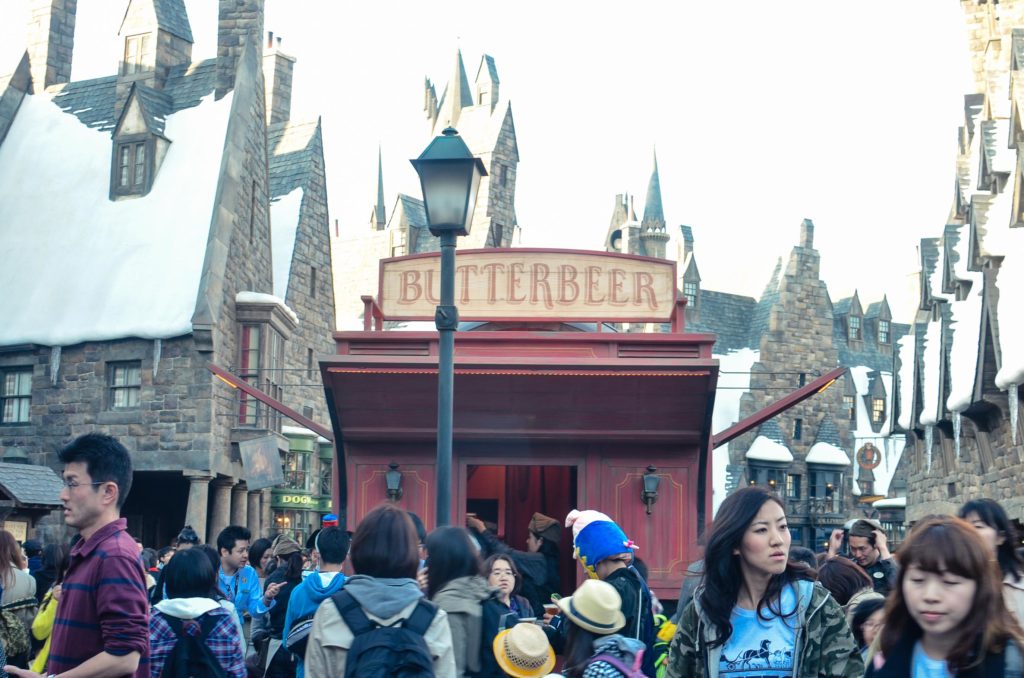
Osaka City Tour
If you didn’t have enough time on the first day, or if your flight arrived late at night, I recommend allocating Day 2 to explore Osaka. There are plenty of attractions to check out, and it might be worth getting the Osaka Amazing Pass (Osaka e-Pass), depending on the number of places you plan to visit. This pass also provides unlimited rides on all Osaka Metro and city bus routes. These are some of the attractions covered by the pass – Umeda Sky Building, Osaka Castle Museum, Osaka-jo Gozabune Boat, Tombori River Cruise, The National Museum of Art, Wonder Cruise (Dotonbori) and Tsutenkaku Tower.
Day trip to Nara from Osaka
Another option for Day 2 is a day trip to Nara from Osaka, which is a great way to immerse yourself in the rich history and culture of Japan. The journey to Nara takes about 45 minutes on the JR Rapid train, leaving plenty of time to explore all that this city has to offer. A few notable sights include Todaiji Temple, Horyuji Temple and Nara Deer Park.
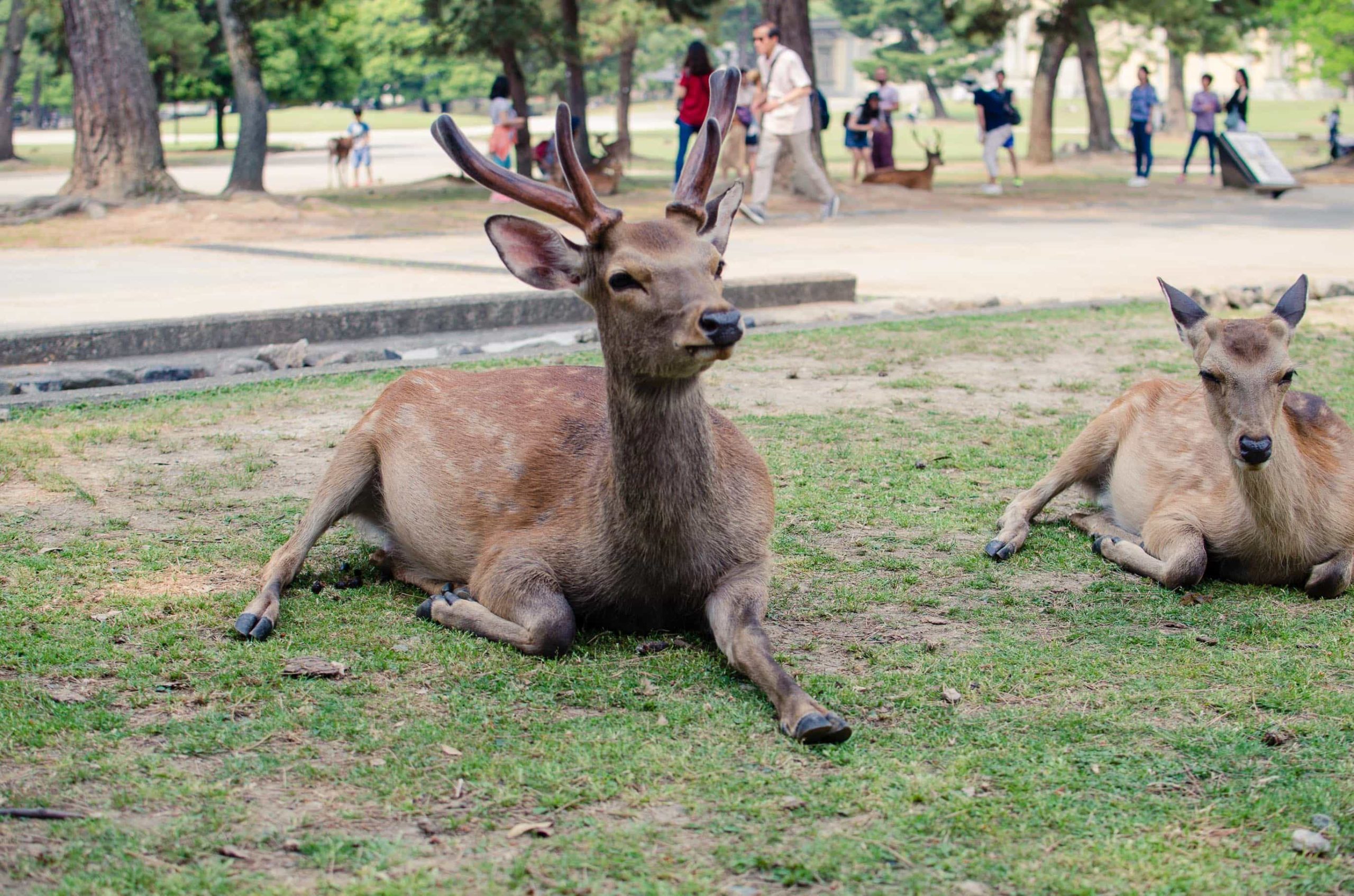
Day 3 (Kyoto)
Coming from Osaka, you can take JR, Hankyu Rail or Keihan Rail to get to Kyoto Station. Here’s my suggestion for Day 3 of this 7-day Japan Itinerary:
- Start your day by visiting Ginkakuji Temple (Silver Pavilion)
- Walk along the Philosopher’s Path, a beautiful stone walkway that follows a canal lined with cherry trees
- Visit Nanzenji Temple, one of the most important Zen temples in Japan
- Head to Yasaka Shrine, a Shinto shrine located in the Gion district
- Explore the Higashiyama district, a historic area of Kyoto that’s filled with traditional shops and restaurants
- Finally, visit Kiyomizudera Temple, a famous Buddhist temple on a hill overlooking Kyoto
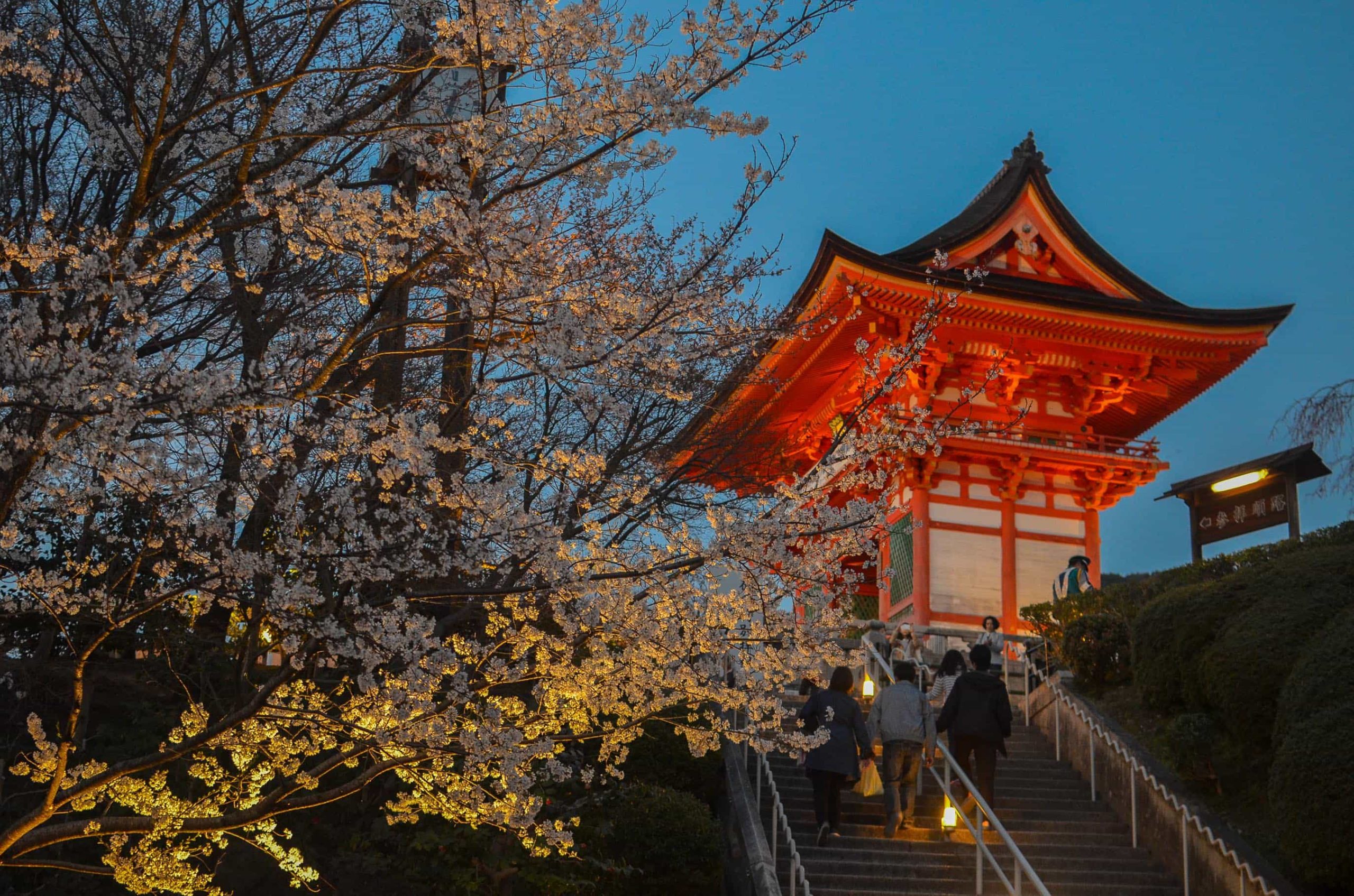
Getting around the city is very easy because of its extensive bus network. Though Kyoto also has trains and subway network, I find navigating the city easier when I take a bus. Raku Bus is the city-run public bus in Kyoto, will cover most of your travel needs. Bus No. 100 goes to eastern Kyoto particularly the Higashiyama and Okazaki areas. Raku Bus No. 101 goes its way up the middle of Kyoto to the northern parts of the city. Bus No. 102 goes to the northern part of Kyoto.
Project Gora tip: Purchase a Kyoto All-day bus pass (JPY 500) for unlimited bus ride on Raku and Non-Raku buses. It is more economical than paying for individual tickets because each time you ride a bus, it will cost you a minimum of JPY 230.
Day 4 (Kyoto)
On day 4, consider Fushimi Inari as your first destination. Fushimi Inari Shrine is dedicated to Inari, the Shinto God of Rice. The place is famous for its thousand vermilion torii gates along the trail that leads to the forest of the sacred Mount Inari. The best way to get to Fushimi Inari is by taking JR Nara Line from Kyoto Station to JR Inari station (7 minutes, JPY 150).

Your second destination is Kinkakuji (Golden Pavilion), one of the many UNESCO World Heritage Sites in Kyoto. It is a Zen temple with two floors completely covered in gold leaf. The best way to get to Kinkakuji is by returning to Kyoto Station, then taking Kyoto City Bus number 101 or 205. The journey takes approximately 40 minutes, and admission is JPY 400.
Spend the rest of the afternoon in Arashiyama District. From Kinkakuji, hop on Bus no. 101 and get off at Kitano Hakubaicho Station. Take the Keifuku Electric Railway aka Randen and get off at Arashiyama Station (requires a transfer at Kitabiranotsuji station).
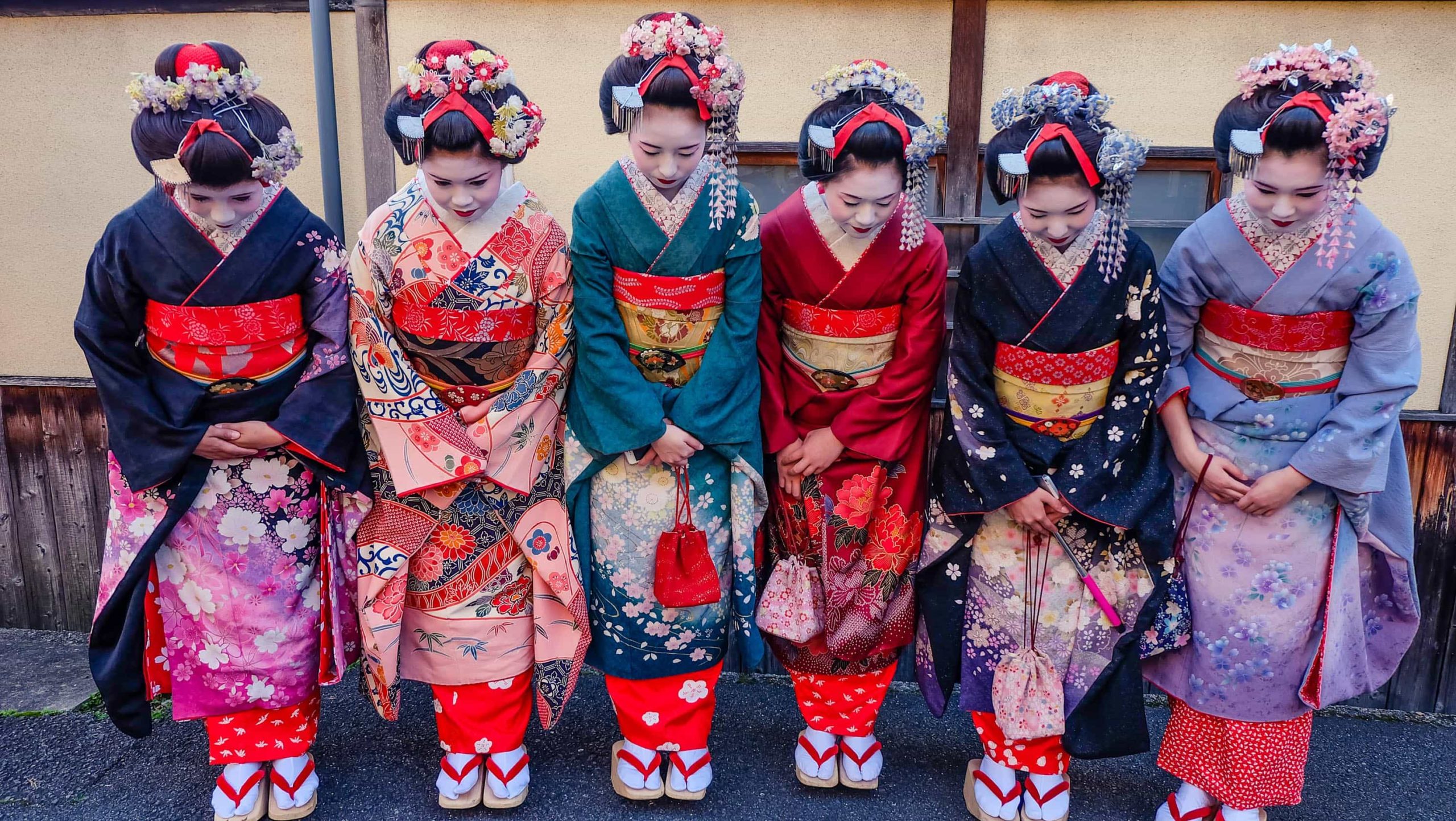
You can also include this only-in-Kyoto experience in your Japan itinerary – Maiko Transformation for women or Samurai Transformation for men. If you only got one day to explore Kyoto, you have to choose which attractions you want to visit. I created a 1-day Kyoto Itinerary which can help you plan your trip.
Day 5 (Tokyo)
Travel from Kyoto to Tokyo via Shinkansen (Bullet Train). Nozomi, the fastest Shinkansen costs JPY 14,110 one way from Kyoto Station to Tokyo Station and travel approximately takes 2 hours and 20 minutes. Hikari, which is slightly cheaper at JPY 13,800 one way, takes a little longer at 2 hours and 40 minutes. The slowest Shinkansen, Kodama costs JPY 13,500, reaches Tokyo in about 3 hours and 50 minutes.
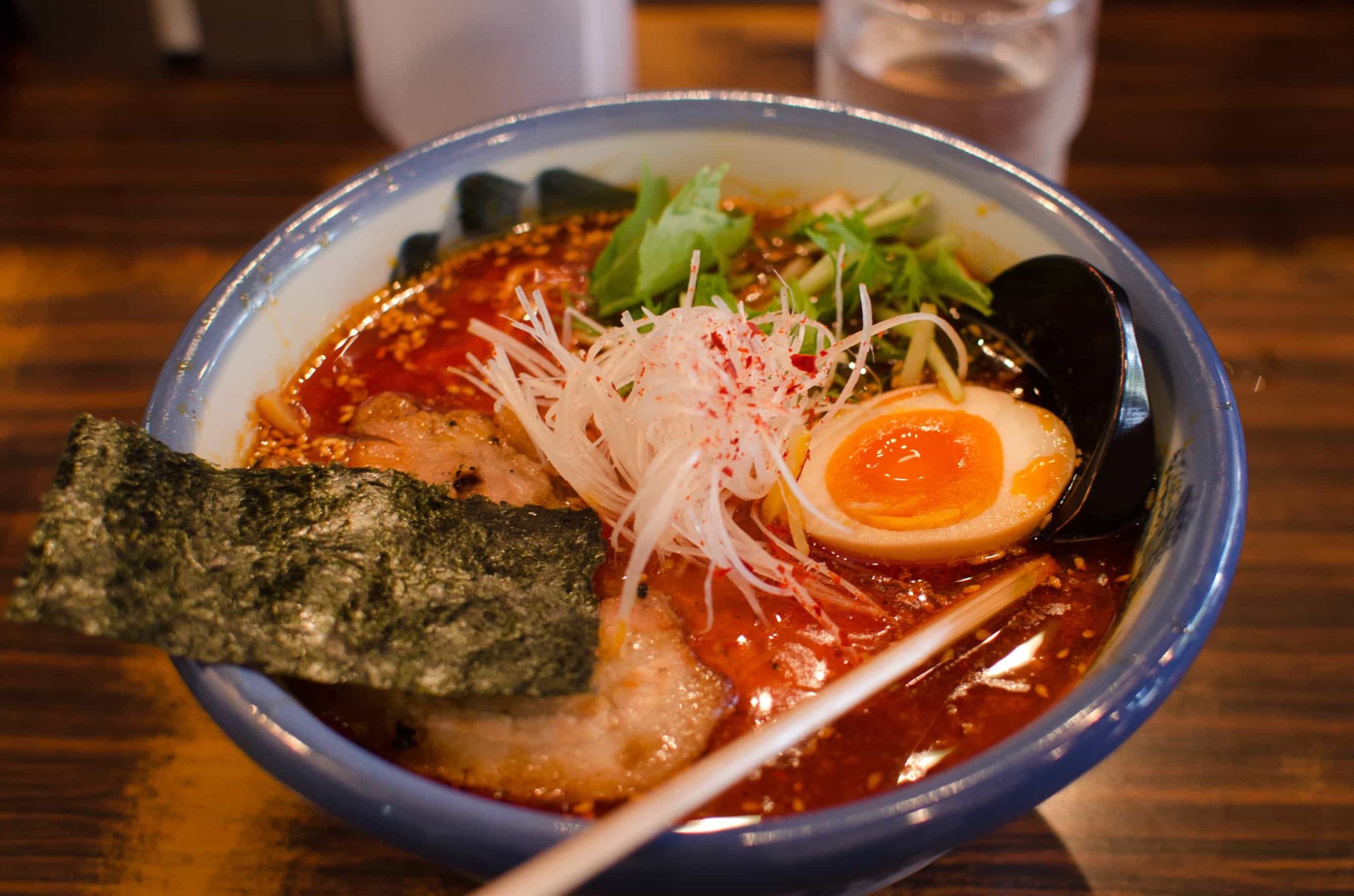
Start your Tokyo adventure in Meiji Jingu, a shrine dedicated to the Meiji Emperor and his Empress. Despite being situated in the busy area of Harajuku, all the hustle and bustle were cut off the moment you turn right and cross over the 40-foot giant torii gate. The walk through the forest to get to the shrine is very relaxing. Travel from Shinjuku Station of JR Yamanote Line to Harajuku Station approximately takes 5 minutes (JPY 140).
End your day at Tokyo Metropolitan Government Building back in Shinjuku, where you can get a glimpse of Mount Fuji under favorable weather conditions. You can also catch the most stunning views of Tokyo at the 360° open-air observation deck called Shibuya Sky. As it stands 230 meters above the ground, it is the highest point in the Shibuya district.
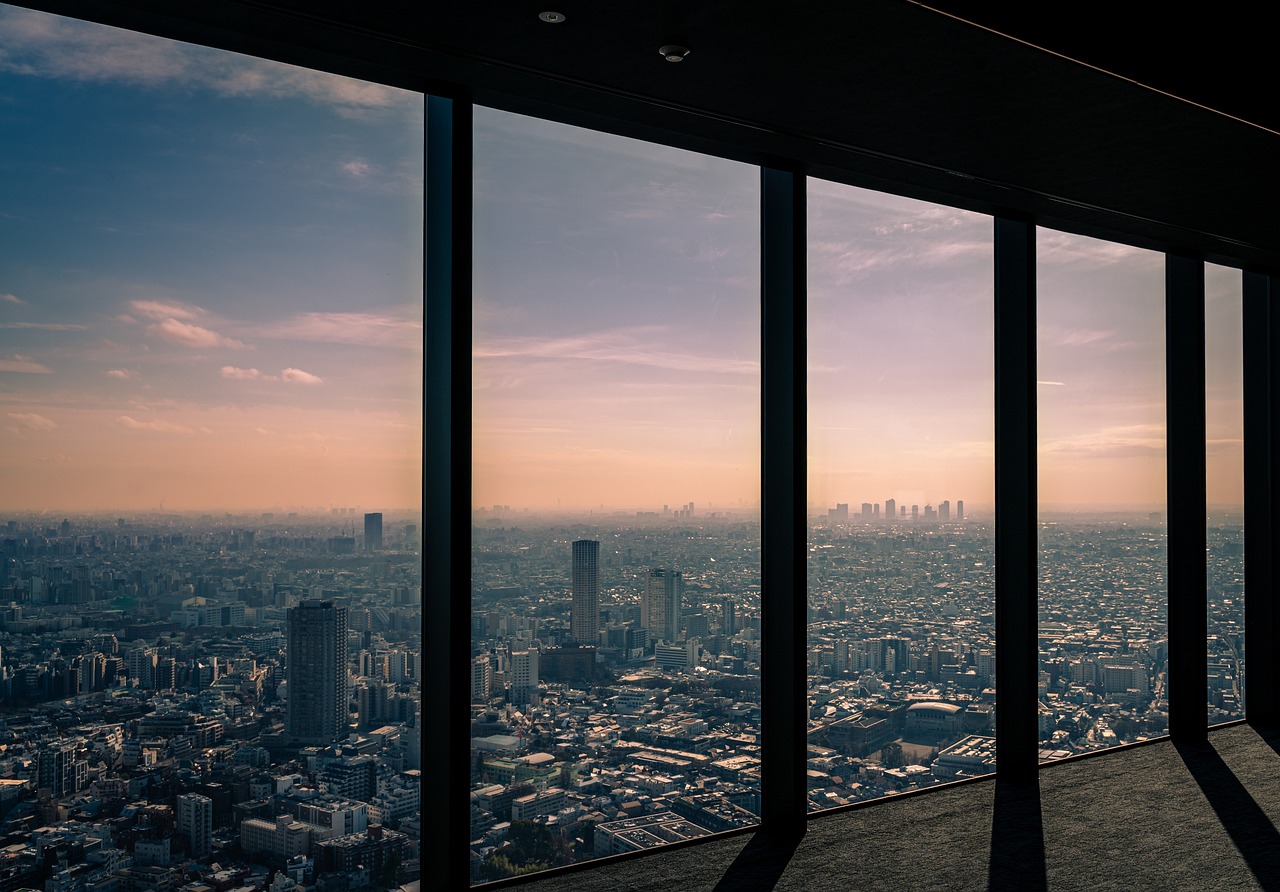
Day 6 (Tokyo)
If your travel dates happen to be in Spring, specifically Cherry Blossom season, do not miss cherry blossom viewing in Ueno Park, Shinjuku Gyoen, Chidorigafuchi or Sumida Park. If it’s Autumn, you can see beautiful yellow ginkgo trees in Marunouchi Gyoko-dori and Yoyogi Park.
In the afternoon, check out some of Tokyo’s famous destinations like Akihabara, the center of Japan’s otaku (diehard fan) culture. Don’t miss Harajuku, Shibuya and Omotesando. For dog lovers like me, pay a visit to Hachiko’s statue located in Shibuya Station’s Hachiko Exit. Another prominent landmark in Shibuya is the large intersection known as “The Scramble”.
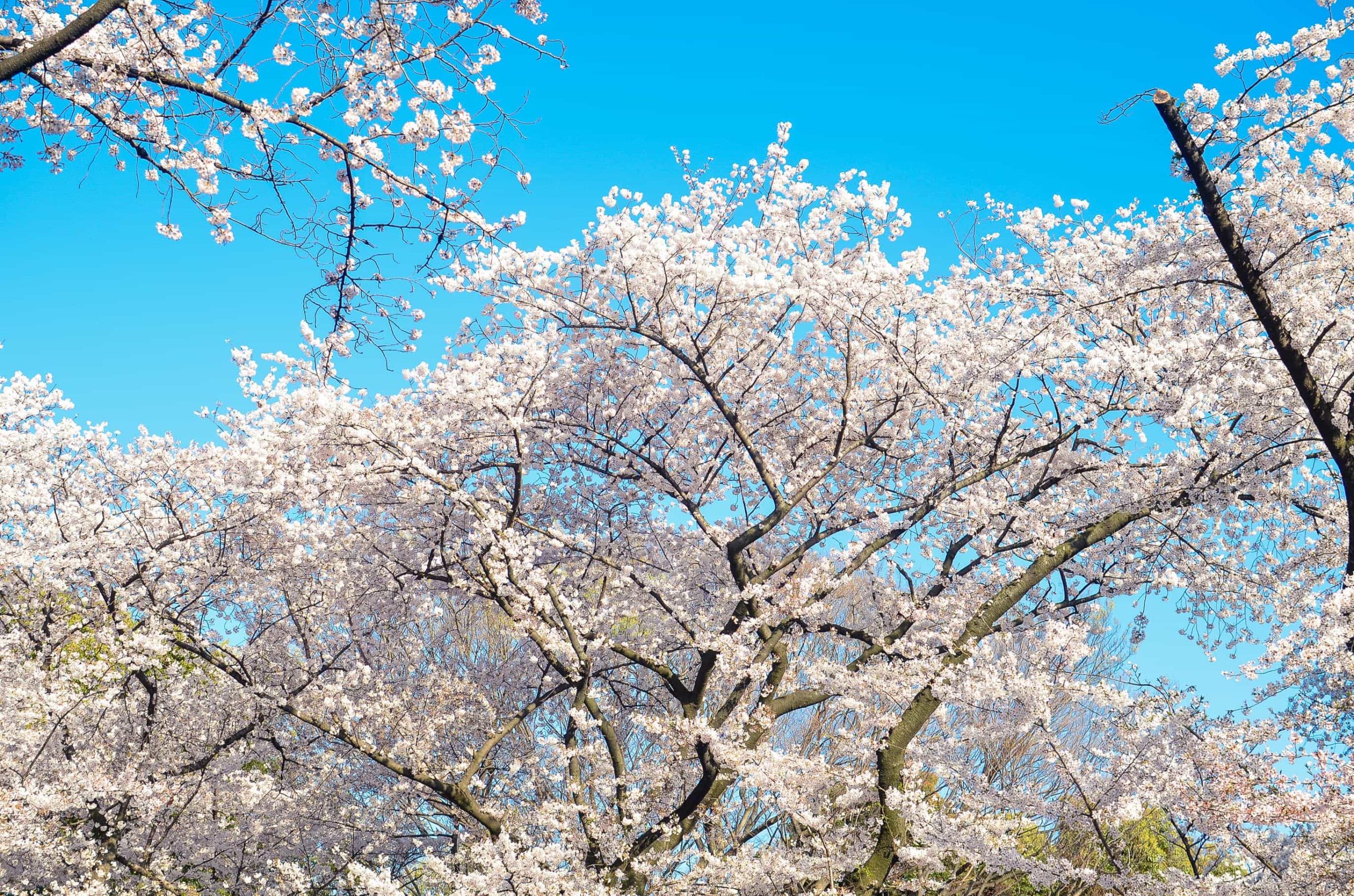
Mt. Fuji Day Trip from Tokyo
On Day 6, embark on a Mt. Fuji Day Trip from Tokyo. There are various tours tailored to the seasons, ensuring a personalized experience. These tours will lead you to panoramic viewpoints, tranquil nature walks, and cultural insights.
Theme Park Day: Disneyland or DisneySea
Alternatively, you can spend the day at Tokyo Disneyland or DisneySea, two of the most popular theme parks in Japan. Both parks offer a variety of attractions, shows, and parades, as well as themed areas based on popular Disney movies and characters. You can purchase a Tokyo Disneyland one-day passport here.
Note that the Tokyo Disney parks can be quite crowded, especially on weekends and holidays, so it’s a good idea to arrive early and plan your day accordingly. You can check the park schedules and plan your ride strategy in advance to maximize your time at the parks.
Day 7 (Tokyo)
On day 7, you can spend a few hours shopping before your scheduled time of departure. Find the nearest Donki (short for Don Quijote), which is one of Tokyo’s cheapest supermarkets selling a huge variety of goods. Buy some Japanese snacks like Tokyo Banana, Japanese Rice Cake Mochi Daifuku and Kitkat Matcha (Gren Tea) flavor to take home for your friends and family.
After shopping, head to Narita International Airport and take Narita Express (55 minutes, JPY 3,250). A faster and cheaper option is via Keisei Skyliner (40 minutes, JPY 2,500). But the most budget-friendly option is Keisei Main Line (regular commuter train), which requires one train transfer (about 80 minutes, JPY 1060).
You might also consider taking the airport limousine bus instead. If you need door-to-door transfers from your hotel within central Tokyo to the airport, you can book a private airport transfer instead. These options are especially suitable for families or tourists with heavy luggage.
With this 7-day Japan Itinerary, is a Japan Rail Pass worth it?
The Japan Rail Pass costs JPY 50,000 (roughly USD 330) for an Ordinary Car/Second Class pass valid for 7 consecutive days. If you are following this itinerary (arriving in Kansai and departing from Narita, or vice versa), then the pass will not pay off. However, if you plan to visit different prefectures within a week, it might be worth considering, though I highly doubt it. I suggest coming up with your itinerary first and then calculating your train ticket costs using the JR Pass calculator.

Which pass is useful for this 7-day Japan Itinerary?
For Osaka, Kyoto and Nara
Using an IC card (like Icoca, Suica, or Pasmo) in combination with day passes such as the Osaka Amazing Pass (Osaka e-Pass) and Kyoto Sightseeing Pass is the way to go. If you plan to travel to Kobe, Himeji, Nara, and Mount Koya from Osaka or Kyoto, I’d also recommend the Kansai Railway Pass (formerly known as the Kansai Thru Pass). This pass provides unlimited travel on non-JR trains and subways and can be used on non-consecutive days.
For Osaka to Tokyo, get an individual Shinkansen ticket, which grants you access to the bullet train, including Nozomi, the fastest bullet train in Japan. With this ticket, you can enjoy a swift 2-hour, 20-minute journey from Osaka to Tokyo for just JPY 13, 870 ($100).
For Tokyo
If you’re staying near a subway station, get a Tokyo Subway Ticket, which is valid for all Tokyo Metro and Toei Subway lines for 24, 48, or 72 hours. If you’re near a JR station, opt for the Tokunai Pass (JPY 760) for unlimited rides on local and rapid JR East trains within the 23 Special Wards of Tokyo. First-time visitors can stick to the JR Yamanote Line for access to most famous attractions in Tokyo.
Travel Tip: Book your activities with Klook and get up to 5% off when you use my code PROJECTGORAKLOOK.
Where to Stay in Osaka, Kyoto and Tokyo
As with all my trips to Japan, I always search for accommodations that offer real value. Most of the time, I book hostels or hotels right in the city center, just a few minutes away from the train station. I have stayed at AirBnbs before; however, based on my experience, they are often a bit farther from train stations. Additionally, without a receptionist, there isn’t someone readily available if there’s an issue with the room. The hotels listed below are the ones I have personally tried and would definitely recommend.
Osaka
Hostel Mitsuwaya Osaka
Address: 2 Chome-5-15 Kawarayamachi, Chuo Ward, Osaka, Japan
Nearest Train Station: 7-minute walk from Tanimachi 9-chome Station
Mitsui Garden Hotel Osaka Premier
Address: 3 Chome-4-15 Nakanoshima, Kita Ward, Osaka, Japan
Nearest Train Station: 3-minute walk from Watanabebashi Station, Keihan Nakanoshima line (exit #2)
The Bridge Hotel Shinsaibashi
Address: 1-10-24, Nishishinsaibashi, Chuo-ku Osaka-shi Osaka, Japan
Nearest Train Station: 3-minute walk from Shinsaibashi station (exit #7)
Kyoto
Piece Hostel Kyoto
Address: 21-1 Higashikujo Higashisannocho, Minami Ward, Kyoto, Japan
Nearest Train Station: 5-minute walk from Kyoto Station
Citadines Karasuma-Gojo Kyoto
Address: 432 Matsuyacho, Gojo Karasuma-dori Higashi-iru, Shimogyo-ku, Kyoto, Japan
Nearest Train Station: 1-minute walk from Gojo station
Hotel Anteroom Kyoto
Address: 7 Aketacho Higashikujo, Minami-ku, Kyoto, Japan
Nearest Train Station: 5-minute walk from Kujo station
Tokyo
Almont Hotel Nippori
Address: 5 Chome-47-1 Higashinippori, Arakawa City, Tokyo, Japan
Nearest Train Station: 5-minute walk from Nippori station on the JR Keihin-Tohoku Line, JR Yamanote Line, and Keisei Main Line
Tokyu Stay Shinjuku
Address: 3-7-1 Shinjuku, Shinjuku 160-0022, Tokyo, Japan
Nearest Train Station: 1-minute walk from Shinjuku Sanchome station on the Toei Shinjuku Line, Tokyo Metro Marunouchi Line, and Tokyo Metro Fukutoshin Line
The Millennials Shibuya
Address: 1 Chome-20-13 Jinnan, Shibuya City, Tokyo, Japan
Nearest Train Station: 3-minutes walk from Shibuya Station of JR Yamanote Line
Did you like this 7-day Japan Itinerary? Got any questions? Comments? Insights? I’m all ears! Let’s chat down below. Arigatou!
Stay connected for more tips, inspiration, and stories! Follow me on Instagram, Facebook, TikTok, and Pinterest. Have a fantastic day, my dear reader!


5 replies on “The Best 7-Day Japan Itinerary: Osaka, Kyoto & Tokyo”
This itinerary is very compact and helpful! Im so glad i have found this page! Now i know where to start!
Glad you found this helpful! Thanks for visiting my page ^_^
I feel so encouraged by your itinerary as other people’s comments were very disheartening. They fail to understand that not everyone can afford time/money for long travels even if they want to. This has been a very helpful thread. Thanks!
I’m glad you found this helpful. As someone who usually doesn’t have a lot of time and resources for vacation, I know how hard it is to plan a trip. I guarantee that you would still find a 7-day trip to Japan really enjoyable. 💟
I was able tо find good info from yoսr content.